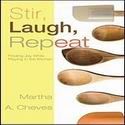You want a breakfast cereal that is high in fiber and low in sugar. Your kids just want the one in the coolest-looking box. Here are 10 tips for choosing a healthy breakfast cereal.
A supermarket’s cereal aisle is loaded with breakfast cereal choices — enough to make your head spin. How do you, as a parent, choose wisely so your kids are eating a healthy breakfast? The key is to read the nutritional information and not the marketing slogans shouting from the brightly colored boxes.

Here are 10 tips for choosing a healthy breakfast cereal that will deliver great kids’ nutrition:
1. Go for high fiber. A healthy breakfast cereal should have at least 3 grams of fiber per serving, says Suzanne Farrell, MS, RD, a Denver-based spokeswoman for the American Dietetic Association. “Breakfast is an excellent time to sneak more fiber into your kids’ diet.” It doesn’t matter whether it’s soluble or dietary fiber as long as it has at least 3 grams, she says. The higher the fiber content of the breakfast cereal, the longer they’ll feel full after eating it.
2. Count the calories. “A good guideline is a cereal that has about 150 calories or fewer per serving,” Farrell says. Check the serving size. “The serving size of some of your more dense cereals may be smaller than you’re used to.” A good serving size is 3/4 to 1 cup. Your kids should feel full if they eat that amount.
3. Look for low sugar. “I love for the sugar content to be in the single digits,” Farrell says. “So anything that’s less than 10 grams is okay. A rule of thumb is to stick to those that are 6 to 8 grams.” No one type of sugar is better than another, Farrell says. Some studies suggest that consuming high-fructose corn syrup can trigger the body to crave more sweets. High-fructose corn syrup is one of the more popular sugars added to foods, including breakfast cereals, Farrell says, “but sugar is sugar, whether it’s high-fructose corn syrup or molasses or honey, and the body will metabolize it as sugar.”
4. Don’t be fooled by granola. People assume that granola is a healthy breakfast food. “But some granolas can be high in sugar, fat, and calories,” Farrell says. If your kids like granola, buy them some, but use it sparingly. “Think of it as a condiment for the top of a lower-calorie, lower-sugar cereal,” Farrell suggests. Also beware of cereals labeled “low-fat” or “fat-free” as they may actually be higher in sugar and calories. Read the label and see for yourself.
5. Get the “whole” picture. As with all foods, breakfast cereal ingredients will be listed in the order of their highest to lowest concentration. When looking for the best in kids’ nutrition, you want the very first ingredient listed on the cereal box to be a whole grain. It could be whole wheat, whole oats, or whole oat flour. “When you see the world ‘whole,’ it’s indicative of whole grain,” Farrell says. Just "wheat" alone, however, does not necessarily mean whole wheat.
6. Run hot and cold. Both hot and cold cereals can meet the criteria for healthy breakfast choices, Farrell says. “I buy both and give my daughter the option of whether she’d like hot or cold each day. Variety is key,” she adds. “You want to change it up.” Of course, hot cereal can be especially comforting on a cold morning. Make it with milk to add some protein to the meal.
7. Consider going generic. Choosing brand names over store or private labels doesn’t really matter, Farrell says. Store-brand or generic cereals can be just as nutritious as the brand names. “In these economic times, it’s definitely worth it to check out the generic. Definitely give those a chance,” she advises.
8. Organic isn’t a must. When it comes to cereal, organic is not superior, Farrell says — it’s more a matter of personal preference. If you want your kids to eat only organic, buy organic cereal, but it’s not necessary for kids’ nutrition, she says. When it comes to putting fruit on top of the cereal, that’s where you may want to choose organically grown, she explains. And keep in mind that a cereal labeled “natural” doesn’t mean it’s any better either, Farrell says. It still could be high in sugar and sodium.
9. Go for the vitamins and minerals. Most breakfast cereals are fortified with vitamins and minerals, enough to supply approximately 25 percent of the daily value. Some have much more. If your kids are taking vitamins, 25 percent is good. If not, maybe you want those with a higher percentage.
10. Pick what your kids like. You might buy the best cereal in terms of kids’ nutrition, but if they don’t like the taste, they won’t eat it, and you’ve wasted your money. If they only want high-sugar cereals or ones with chocolate bits, give them some, but in small amounts. Mix their favorites with yours, Farrell says. That way you both will be happy.
Don’t let the choices in the cereal aisle overwhelm you. Read labels, not marketing slogans, and look for breakfast cereals that are high in fiber, low in sugar, and fortified with vitamins and minerals.














No comments:
Post a Comment